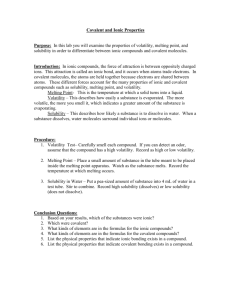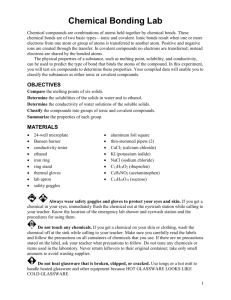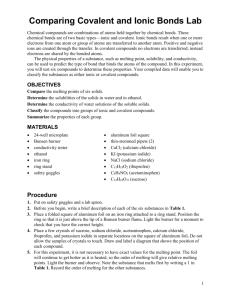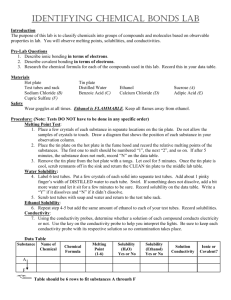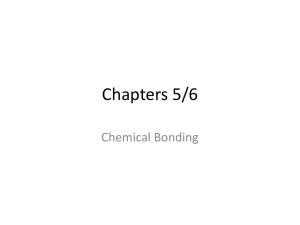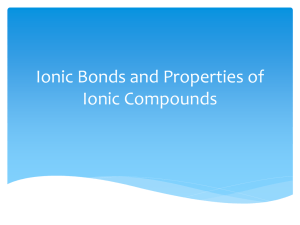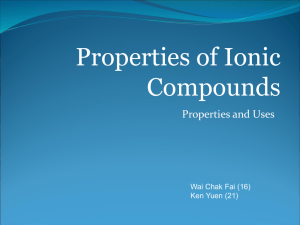Ionic and Covalent Properties
advertisement
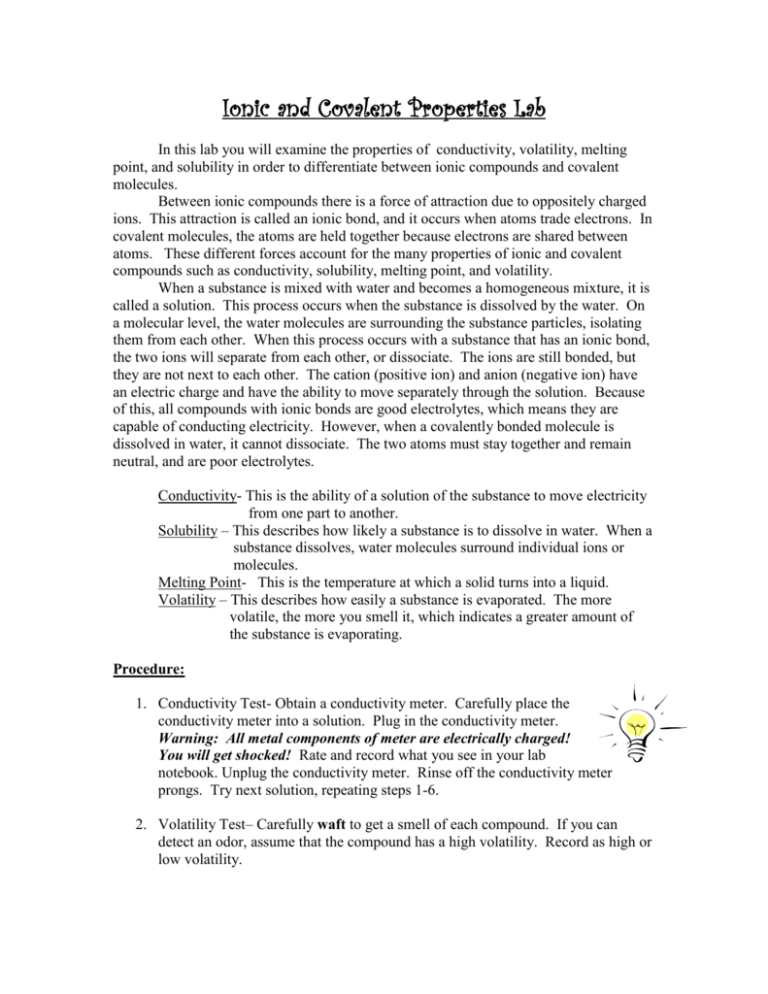
Ionic and Covalent Properties Lab In this lab you will examine the properties of conductivity, volatility, melting point, and solubility in order to differentiate between ionic compounds and covalent molecules. Between ionic compounds there is a force of attraction due to oppositely charged ions. This attraction is called an ionic bond, and it occurs when atoms trade electrons. In covalent molecules, the atoms are held together because electrons are shared between atoms. These different forces account for the many properties of ionic and covalent compounds such as conductivity, solubility, melting point, and volatility. When a substance is mixed with water and becomes a homogeneous mixture, it is called a solution. This process occurs when the substance is dissolved by the water. On a molecular level, the water molecules are surrounding the substance particles, isolating them from each other. When this process occurs with a substance that has an ionic bond, the two ions will separate from each other, or dissociate. The ions are still bonded, but they are not next to each other. The cation (positive ion) and anion (negative ion) have an electric charge and have the ability to move separately through the solution. Because of this, all compounds with ionic bonds are good electrolytes, which means they are capable of conducting electricity. However, when a covalently bonded molecule is dissolved in water, it cannot dissociate. The two atoms must stay together and remain neutral, and are poor electrolytes. Conductivity- This is the ability of a solution of the substance to move electricity from one part to another. Solubility – This describes how likely a substance is to dissolve in water. When a substance dissolves, water molecules surround individual ions or molecules. Melting Point- This is the temperature at which a solid turns into a liquid. Volatility – This describes how easily a substance is evaporated. The more volatile, the more you smell it, which indicates a greater amount of the substance is evaporating. Procedure: 1. Conductivity Test- Obtain a conductivity meter. Carefully place the conductivity meter into a solution. Plug in the conductivity meter. Warning: All metal components of meter are electrically charged! You will get shocked! Rate and record what you see in your lab notebook. Unplug the conductivity meter. Rinse off the conductivity meter prongs. Try next solution, repeating steps 1-6. 2. Volatility Test– Carefully waft to get a smell of each compound. If you can detect an odor, assume that the compound has a high volatility. Record as high or low volatility. 3. Melting Point Test – Place a small amount of substance in a test tube. Hold the tube with tongs over a Bunsen burner. Watch as the substance melts. When you see the melting, take the test tube out of the flame and use a thermometer to record the temperature of the substance. 4. Solubility in Water Test– Put a pea-sized amount of substance into 4 mL of water in a test tube. Stir to combine. Record high solubility (dissolves) or low solubility (does not dissolve). 5. Solubility in Oil Test- Put a pea-sized amount of substance into 4 mL of oil in a test tube. Stir to combine. Record high solubility (dissolves) or low solubility (does not dissolve). Background Information: 1. Define Ionic Bond 2. Differentiate between an ionic bond and a covalent bond. 3. How can you tell if a bond is ionic or covalent without doing any experiments? Questions/Conclusions: 1. Which of the solutions contain ionic compounds? Explain how you know. 2. Which of the solutions do you believe contain covalent compounds? Explain how you know. 3. Chemically, what can account for the good and fair conductivity readings? (which types of bonds cause these results?) 4. What kinds of elements are in the formulas for the ionic compounds? What kinds of elements are in the formulas for the covalent compounds? 5. List the physical properties you might observe that indicate ionic bonding exists in a compound. 6. List the physical properties you might observe that indicate covalent bonding exists in a compound 7. What does it mean when something dissociates? How is it different from dissolving? 8. Why would you get electrocuted if you went swimming in a pool during an electrical storm? Hint: think about what people put in pools in order to kill bacteria. 9. Why do athletes drink electrolytes like Gatorade? What makes it so special?

